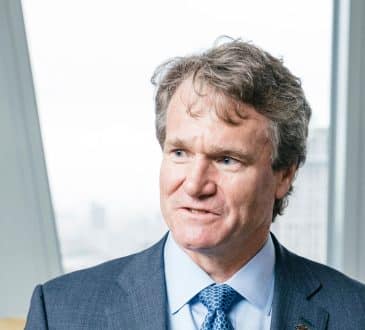Play: A Cultural Phenomenon And Its Historical Analysis

During the 20th century, a significant portion of sociologists turned to analyzing the meaning and importance of leisure. Especially in the American sociological thought of the 1900s and 1930s, free time occupies an important place, while the concept of play, which, according to the dominant views, is directly related to human nature, also emerges. This relationship is structured on the necessity of people for playing, which appears already, from childhood, through the expression of physical and mental skills of the individual who participates in play activities.
As a cultural phenomenon, the concept of play and its importance dominate the thought and theories of the Dutch historian Johann Huizinga. In his classic work, Homo Ludens, in 1938, Huizinga introduces a new term in order to give the individual a new identity, emphasizing his human biological tendency to play. Next to the ideals of Homo Sapiens, which predominate, respectively, during the Enlightenment and the Industrial Revolution, Huizinga places Homo Ludens, that is, the “playing man,” wanting to highlight the cultural dimension of the game, which begins, according to the historian, from the archaic era and reaches our days.
The main features of the game
For Huizinga, freedom is the first and most important feature of the game as a cultural asset. Play is part of a culture from the moment it ceases to be associated with moral obligation. It is regarded as a necessity only in terms of enjoyment. In this sense, the game’s activity must be a free and unhindered process.
Also, the game is outside the limits of reality and, in this way, is understood as the passage from real life to the world of the imaginary and the temporary. Every child knows how to create and keep alive, for as many hours as the activity requires, their world and, above all, how to participate and act themselves in this world. Thus, the game’s activity is interwoven with pretense and representation, which, however, do not reduce the game’s seriousness as a process, but give it a ritual dimension, equating it, sometimes, with the sacred mysteries.
An additional feature of the game, as a cultural phenomenon, is selflessness. As play lies outside of actual and habitual existence, it also distances itself from the demand of satisfying vital needs. As a temporary process, play resembles a form of interlude or interlude of everyday life, which, on its own terms, aims at embellishing individual existence.
At the same time, it is easy to understand that each game takes place within a predetermined ideal field. Huizinga here recognizes the isolation of activity as one of the key features that determine the game’s place, duration, and rules. This element is considered important because it enshrines the temporal and local boundaries of the game, providing it with course and meaning and allowing it to move, change, repeat, and transmit as a form of cultural tradition.
The social dimension of the game
First and foremost, play is a regularly repeated and voluntary activity with the main goal of relaxation. However, it is not limited to a single exclusive function. Play activity is also integral to social development, realizing its cultural function. Individual and collective expression, achieved during a game, favors the development of social ideals, which are above strictly biological processes and experiences, such as nutrition and survival.
The particular nature of the activity lies in the fact that it does not bring profit other than the actual enjoyment of the process and participation. In addition, as a collective activity, play can promote the formation of social groups and the feeling of solidarity.
Through playing, the community understands, meanings, and interprets the world. As a prominent cultural phenomenon, the game is found even in ancient times and, indeed, throughout the animal kingdom. Animals, like humans, enjoy this activity, which in its highest appearance, preserves elements of festive events, contributing to the group’s well-being.
In modern societies, however, its character sometimes changes. Huizinga, who examines both primitive forms and later activity transformations, traces the narrow frames within which leisure and play transform nowadays. For the historian, the game changes significantly, while its essence and importance diminish. The growth of the sports and sports industry and the organization of leisure in terms of programming has affected the free and unselfish nature of the game. Today, where the game is increasingly associated with professionalism, the playful character of the activity, which is its most important aspect, seems to be eliminated.
Have you read?
The new digital concierge enables better, faster, and smarter efficient travel by Dr. Rudy Cardona.
EMPLOYEES DON’T NEED PERMISSION by Bernie Marcus.
The Future of Work: Adapting to Remote Operations by Cory Munchbach.
Flexible Hybrid Work Model Key to Worker Retention by Dr. Gleb Tsipursky.
Evaluating Marketplace Opportunities by Shirish Nadkarni.
Add CEOWORLD magazine to your Google News feed.
Follow CEOWORLD magazine headlines on: Google News, LinkedIn, Twitter, and Facebook.
This report/news/ranking/statistics has been prepared only for general guidance on matters of interest and does not constitute professional advice. You should not act upon the information contained in this publication without obtaining specific professional advice. No representation or warranty (express or implied) is given as to the accuracy or completeness of the information contained in this publication, and, to the extent permitted by law, CEOWORLD magazine does not accept or assume any liability, responsibility or duty of care for any consequences of you or anyone else acting, or refraining to act, in reliance on the information contained in this publication or for any decision based on it.
Copyright 2024 The CEOWORLD magazine. All rights reserved. This material (and any extract from it) must not be copied, redistributed or placed on any website, without CEOWORLD magazine' prior written consent. For media queries, please contact: info@ceoworld.biz
SUBSCRIBE NEWSLETTER








